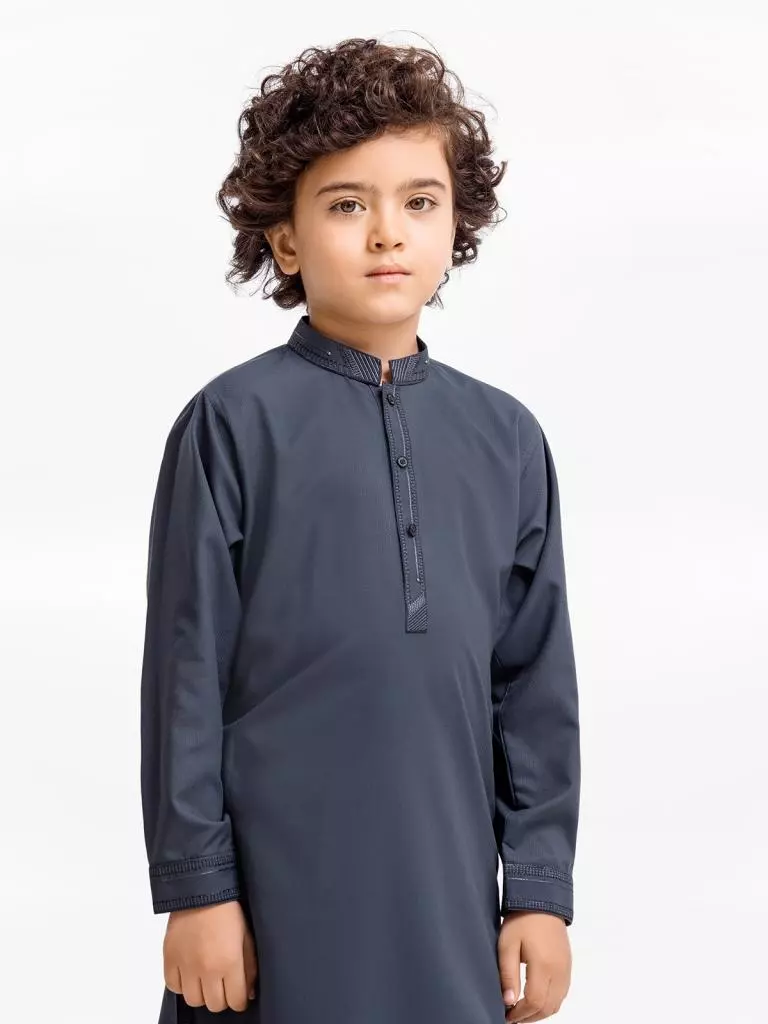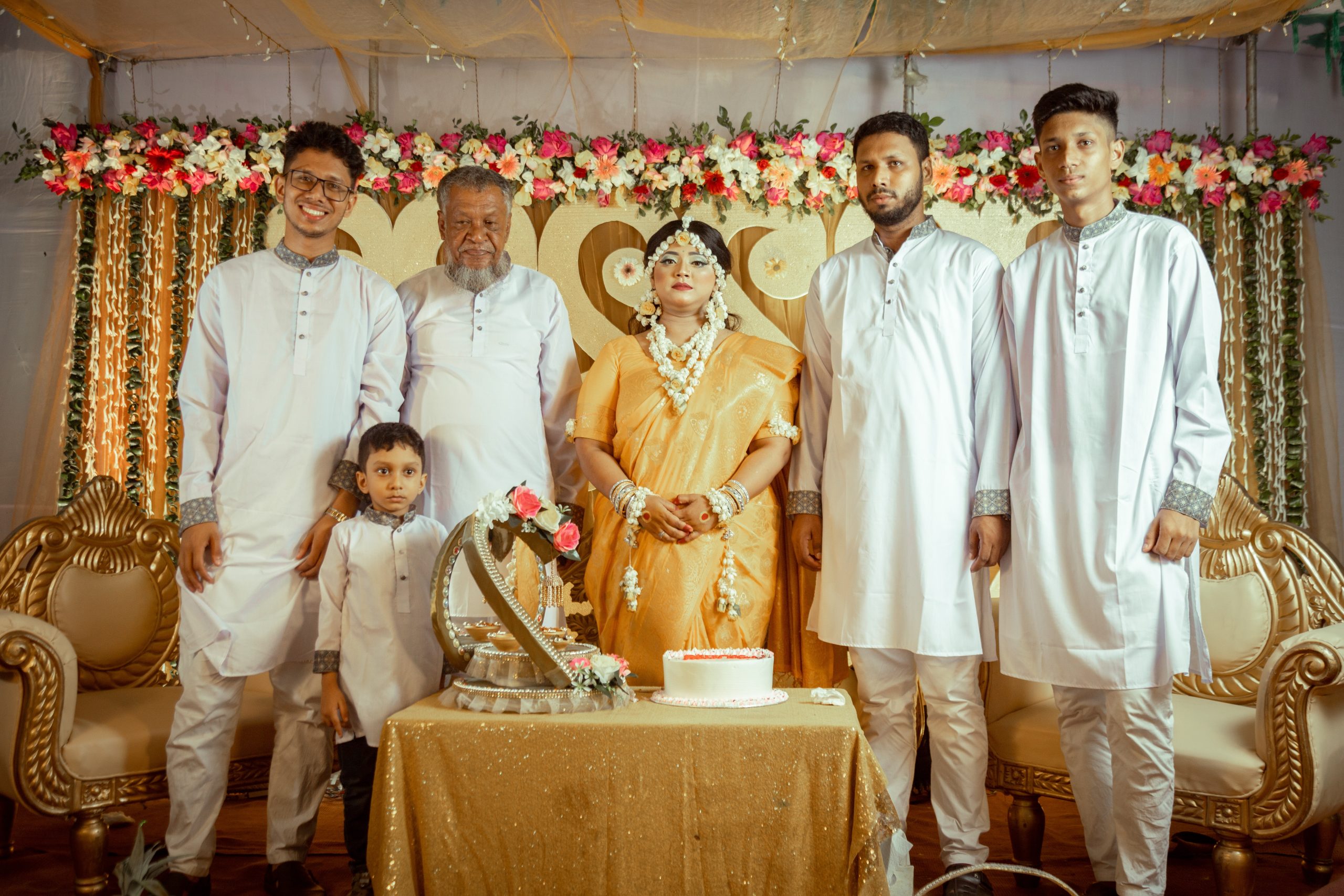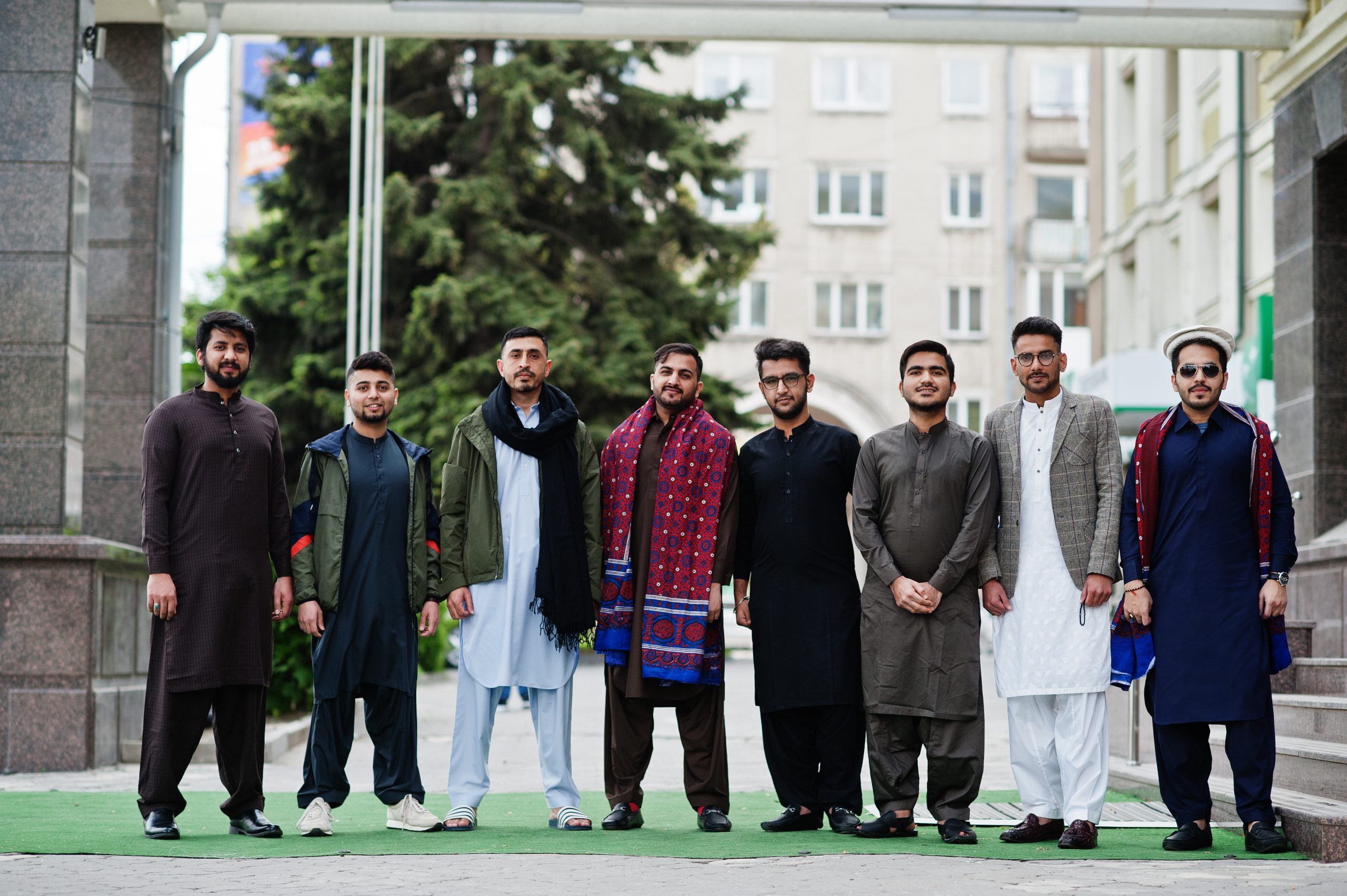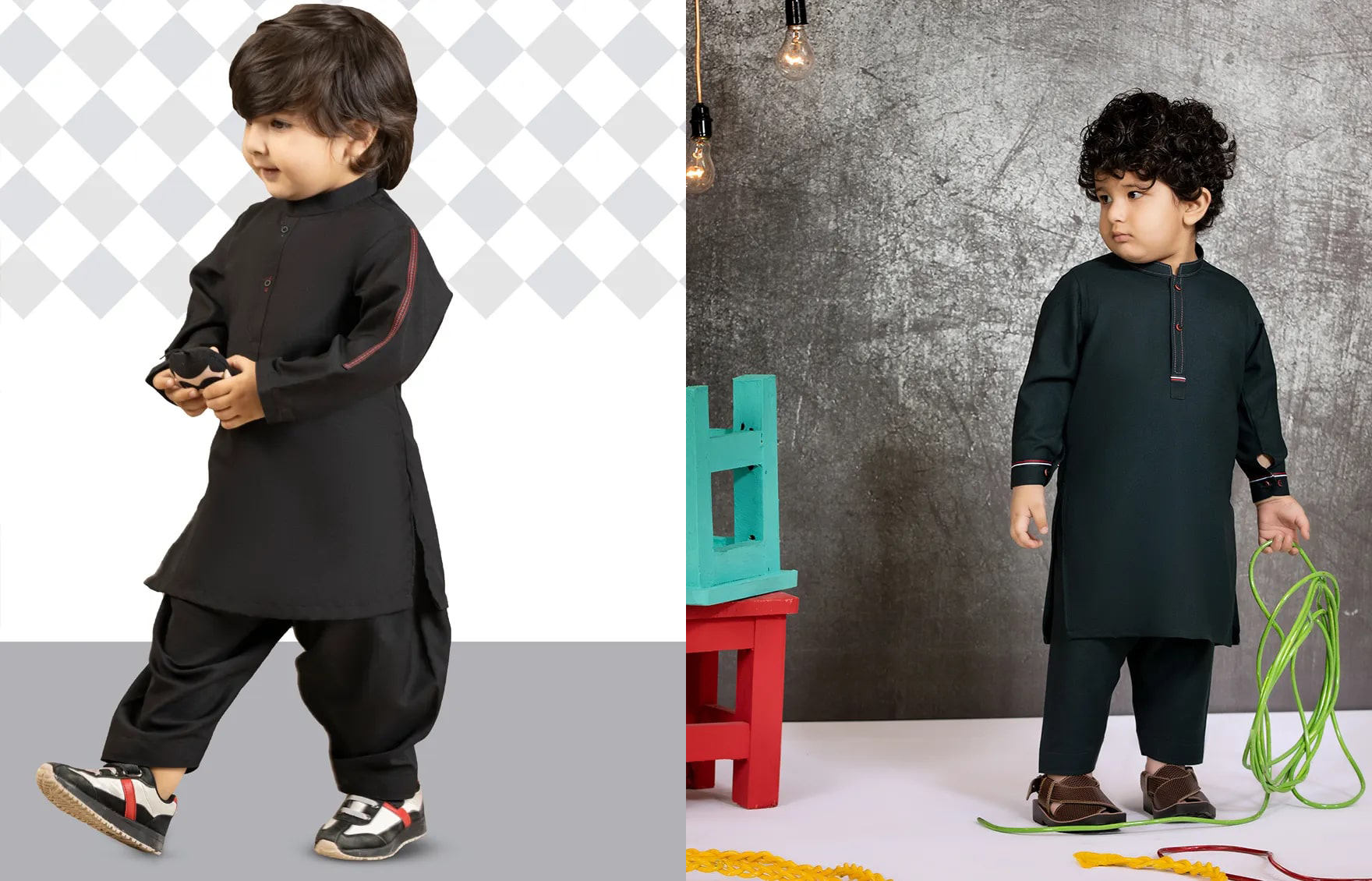The cultural significance of the shalwar kameez in South Asia is deeply rooted in its rich history and diverse influences. Originating in the Mughal Empire, this traditional garment is a fusion of Persian, Arabic, and Turkish styles, reflecting the region’s cultural diversity. Consisting of loose-fitting trousers (shalwar) and a long tunic (kameez), the shalwar kameez is worn by both men and women of all ages and is considered everyday attire in South Asian countries. Its popularity can be attributed to its comfort, versatility, and aesthetic appeal. As a symbol of cultural identity, the shalwar kameez embodies the traditions and values of South Asian society. With its origins dating back to the Mughal era, this attire has a lasting cultural significance in South Asia.
Clothing as a Way To Show Respect For Elders And Traditional Values
Clothing serves as an important expression of culture and identity in South Asia, particularly through the traditional attire known as the shalwar kameez. This ensemble not only showcases the region’s rich history, but also serves as a way to show respect for elders and traditional values.
In South Asian communities, the shalwar kameez is worn as a mark of reverence and respect for the older generations. It is seen as a way to honor and adhere to cultural norms while embodying the cultural heritage. By wearing traditional clothing, individuals demonstrate their reverence for cultural heritage and preserve it for future generations.
The shalwar kameez reflects traditional values through its designs and styles. The attire is often embellished with intricate embroidery, reflecting the craftsmanship and attention to detail that are valued in South Asian culture. The various styles and cuts of the shalwar kameez also represent the diversity within South Asian communities, highlighting regional variations and individual expressions of cultural identity.
By donning the shalwar kameez, individuals not only pay homage to their cultural roots but also project a sense of respect. This traditional attire symbolizes the values of modesty, humility, and grace. It serves as a visual reminder of the importance of tradition and the significance of upholding and respecting cultural heritage in everyday life.
Popularity Among All Ages In South Asian Countries Still Wearing It On Daily Basis
The traditional South Asian dress of shalwar kameez continues to enjoy immense popularity among all age groups in South Asian countries, with many people still choosing to wear it on a daily basis. This traditional attire has become an integral part of the region’s cultural fabric, embraced by people from diverse backgrounds.
The everyday wear of shalwar kameez showcases the practicality and comfort of this traditional dress. It is not limited to formal or special occasions but is instead a common choice for daily attire. This widespread acceptance and continued popularity among all age groups highlight the versatility and adaptability of shalwar kameez in meeting the needs and preferences of South Asian communities.
Shalwar kameez is culturally significant in South Asia and represents the region’s rich heritage. By wearing shalwar kameez, individuals pay homage to their roots and preserve their cultural heritage for future generations.
Shalwar kameez comes in a variety of styles and designs, catering to different tastes and occasions. From the more traditional and intricate styles to contemporary and simpler designs, there is a wide range to choose from. This versatility allows individuals to express their personal style while maintaining a connection to their cultural identity.
Representation Of Respect For Others By Wearing Appropriate Attire For Occasions And Events
Wearing appropriate attire for occasions and events is not only a matter of personal style but also an important way to show respect for others. It acknowledges the significance of the event or occasion and demonstrates a willingness to adhere to cultural norms and expectations.
In a professional environment, for example, individuals often wear western tailored clothes to convey a sense of professionalism and uphold certain standards. However, when it comes to special occasions rooted in South Asian culture, such as weddings or religious ceremonies, it is customary for individuals to don traditional attire like the shalwar kameez. This act of wearing South Asian clothing on such occasions is a way of showing respect for the cultural heritage and traditions of the community.
By choosing to wear appropriate attire for specific events, individuals display their understanding and acknowledgement of the importance of these occasions in the lives of others. It reflects an appreciation for different cultures and a desire to honor and celebrate them. This act of respect is not limited to South Asian traditions but extends to various cultures and communities around the world.
National Identity Through Clothing
Clothing has long played a significant role in expressing national identity and cultural heritage. Throughout history, various countries and regions have developed distinctive styles of clothing that have become synonymous with their national identity. In South Asia, the shalwar kameez has emerged as a quintessential symbol of cultural pride and identity.
This traditional attire, consisting of a loose-fitting tunic (kameez) and baggy pants (shalwar), is worn by both men and women across countries like India, Pakistan, Bangladesh, and Afghanistan. By donning the shalwar kameez, individuals in the region not only embrace their cultural roots but also assert their national identity in a globalized world.
This traditional ensemble showcases the rich history, diversity, and unity of South Asian nations, serving as a visual representation of their unique customs and traditions. Moreover, the popularity and widespread adoption of the shalwar kameez highlight the enduring relevance and influence of traditional clothing in shaping and preserving national identity in modern-day South Asia.
Impact On Young Girls Wearing the Garment to Represent their Heritage and Culture
Young girls wearing the garment of Shalwar Kameez in South Asia have a profound impact on representing their heritage and culture. This traditional attire helps these girls connect to their roots and instills a deep sense of pride in their cultural identity.
For many young girls, wearing Shalwar Kameez is more than just a clothing choice, it is a reflection of their rich history and traditions. Whether it is the vibrant colors, intricate embroidery, or unique designs of the Shalwar Kameez, this attire represents the diverse cultural norms and practices of the region.
By wearing Shalwar Kameez, young girls become ambassadors of their cultural heritage. They proudly embrace their identity, showcasing the beauty and elegance of their traditional attire. This not only strengthens their bond with their heritage but also serves as a reminder of the importance of preserving and passing down these customs to future generations.
By seeing their parents and elders donning Shalwar Kameez on a daily basis, young girls develop a sense of attachment and appreciation for their cultural roots. It becomes a part of their identity, influencing their choices and shaping their worldview.
The impact of young girls wearing Shalwar Kameez goes beyond just clothing; it becomes a symbol of pride and a way to celebrate their heritage. Through this traditional attire, they carry their culture forward, ensuring that their rich history and traditions remain alive and thriving for years to come.

Conclusion
In conclusion, the Shalwar Kameez holds significant cultural value in South Asian society and has made a profound impact on fashion trends. From its origins as traditional attire to its modern and versatile adaptations, the Shalwar Kameez has shown remarkable resilience throughout the centuries. Its influence can be seen not only in daily wear but also in contemporary adaptations on fashion runways and in Bollywood movies. As a symbol of South Asian culture, the Shalwar Kameez continues to captivate fashion enthusiasts and serve as a timeless representation of the region’s rich heritage. Whether worn as an everyday fashion statement or for religious ceremonies, the Shalwar Kameez embodies the essence of South Asian style and remains an integral part of contemporary fashion.










